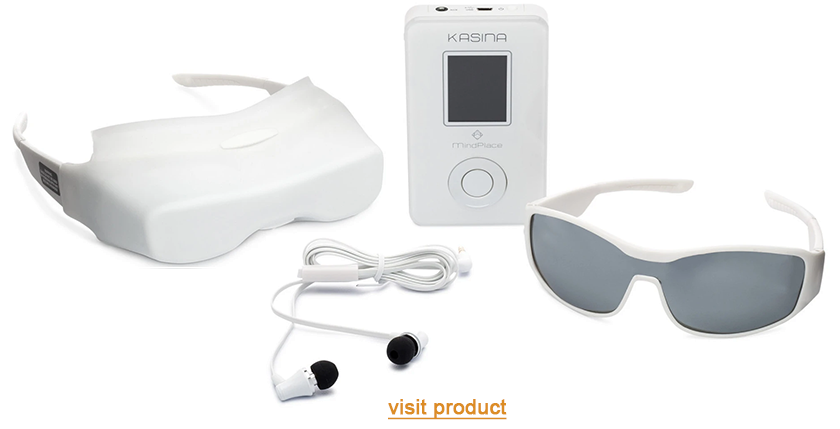
Sound waves have an amazing way of guiding our minds to different states, whether it’s relaxation, focus, or even deep sleep. Two popular types of sound waves—binaural beats and isochronic tones—are especially known for their ability to influence meditation. But what are they, exactly? And how do you choose the right one for your meditation goals?
Contents
- Understanding Binaural Beats
- Getting to Know Isochronic Tones
- Choosing Between Binaural Beats and Isochronic Tones
- Using Binaural Beats and Isochronic Tones in Meditation
- Common Misconceptions About Sound Waves in Meditation
- Exploring the Benefits of Binaural Beats and Isochronic Tones
- Integrating Sound Waves into Your Daily Meditation Practice
Understanding Binaural Beats
Binaural beats are created when two slightly different frequencies are played in each ear. Imagine you’re listening to a tone of 200 Hz in your left ear and 210 Hz in your right ear. Your brain “hears” the difference as a single 10 Hz beat, which is known as the binaural beat. This frequency difference causes the brain to synchronize with the beat, producing brainwave patterns that match the desired state, like relaxation or focus.
How Binaural Beats Affect the Brain
Binaural beats have a unique effect on the brain because they encourage it to match specific brainwave states associated with relaxation, alertness, and even sleep. When you listen to a 10 Hz binaural beat, for instance, your brain will likely shift to alpha waves—often linked to calm and creativity. This synchronization can make meditation easier, allowing you to sink into a state of relaxation or focus without having to force it.
Brainwave Frequencies and Their Effects
- Delta (1-4 Hz): Deep sleep and healing. Often used for relaxation and recovery.
- Theta (4-8 Hz): Deep meditation, creativity, and subconscious exploration.
- Alpha (8-12 Hz): Calm focus, relaxation, and light meditation.
- Beta (12-30 Hz): Alertness, concentration, and problem-solving.
- Gamma (30+ Hz): High-level cognition, inspiration, and peak awareness.
By choosing binaural beats at specific frequencies, you can steer your mind toward a desired state. For meditation, theta and alpha frequencies are popular because they promote relaxation and creativity.
Getting to Know Isochronic Tones
Isochronic tones are a bit different. Unlike binaural beats, isochronic tones don’t require headphones, though they can enhance the experience. These tones are single pulsing beats spaced apart at regular intervals, and the pulsing creates an effect that quickly engages the brain. Imagine a steady drum beat that draws you in—that’s similar to what isochronic tones do for your mind.
How Isochronic Tones Influence Brain Activity
The repetitive nature of isochronic tones helps train the brain to produce specific brainwave patterns, much like binaural beats. However, isochronic tones are often considered stronger since they’re more direct. The beat is clear and consistent, making it easy for your brain to sync up with the desired rhythm. They’re great for meditation sessions where you want to stay awake, alert, and fully aware of the experience.
Many people find that isochronic tones help them focus during guided meditation, study sessions, or anytime they need a mental boost. They’re also used in relaxation, but tend to be a little “louder” in their effect, which makes them a strong choice for sessions requiring focused awareness.
Choosing Between Binaural Beats and Isochronic Tones
So, which one is right for you? Both binaural beats and isochronic tones have their strengths. Your choice depends on your meditation goals and personal preference. Here’s a quick comparison to help you decide:
- Use Binaural Beats for Deeper Relaxation: If you’re looking to enter a state of deep relaxation or sleep, binaural beats are generally gentler and less intrusive. They work well for theta and delta wave meditation.
- Choose Isochronic Tones for Alert Focus: If your goal is to stay focused and aware, especially in alpha or beta states, isochronic tones offer a more noticeable rhythm that helps maintain focus.
Experimenting with both can help you find which one best aligns with your personal preferences and meditation goals. Some people prefer the softer approach of binaural beats, while others find the defined beats of isochronic tones more effective.
Using Binaural Beats and Isochronic Tones in Meditation
Adding sound waves to meditation is easy and can be done with just a few steps. Here’s how you can get started with binaural beats or isochronic tones for a rewarding meditation experience:
Steps for Effective Meditation with Sound Waves
- Set Your Goal: Decide what you want from your meditation session. Are you looking to relax, focus, or sleep better? Your goal will guide the frequency you choose.
- Find the Right Track: Many apps and streaming platforms offer binaural beats and isochronic tones tailored for different brainwave frequencies. Choose a track that aligns with your goal, whether it’s theta waves for creativity or beta waves for alertness.
- Choose a Comfortable Space: Make sure you’re in a space where you won’t be disturbed. If you’re using binaural beats, wear headphones for the best effect. Isochronic tones can be played on a speaker.
- Focus on the Sound: As you begin your session, bring your attention to the sound waves. Let the rhythm guide your breathing, and allow your mind to settle into the desired brainwave state.
With regular practice, you’ll likely notice that it becomes easier to reach a meditative state with the aid of these sound waves. Over time, the process can become almost automatic, like flipping a switch to relaxation or focus mode.
Common Misconceptions About Sound Waves in Meditation
There’s a lot of talk around binaural beats and isochronic tones, and with that comes some myths. Let’s clear up a few of the common misunderstandings:
Myth 1: Binaural Beats and Isochronic Tones Are “Magic Fixes”
While binaural beats and isochronic tones can help you reach certain mental states, they’re not a cure-all. They can’t replace a consistent meditation practice or a healthy lifestyle. Think of them as tools in your mental health toolbox—useful, but not magical.
Myth 2: You Must Use Headphones for Both
Only binaural beats require headphones to be effective, as the two frequencies need to be played separately in each ear. Isochronic tones can be used with or without headphones, making them more versatile if you prefer an open sound.
Myth 3: Higher Frequencies Are Always Better
People often think that faster beats mean more effective results, but this isn’t the case. The right frequency depends on your meditation goal. For deep relaxation, slower frequencies like delta are more beneficial, while beta or gamma frequencies are better for focus and productivity.
Exploring the Benefits of Binaural Beats and Isochronic Tones
When used intentionally, binaural beats and isochronic tones can enhance various aspects of mental and emotional well-being. Here’s a look at the unique benefits each type of sound wave brings to meditation:
Benefits of Binaural Beats
- Deeper Relaxation: Binaural beats are known for promoting relaxation, making them perfect for winding down after a busy day.
- Enhanced Creativity: With theta waves, binaural beats can help open the mind to creative insights and new ideas.
- Stress Reduction: Many users find that binaural beats reduce stress by easing the brain into a calming rhythm.
Benefits of Isochronic Tones
- Improved Focus: The clear beats of isochronic tones are ideal for maintaining focus, making them a great choice for study sessions or working.
- Increased Alertness: Isochronic tones with beta frequencies can wake up the mind, helping you feel more energized.
- Mood Boost: Many people use isochronic tones to lift their mood, especially with alpha and beta frequencies that support alert relaxation.
Integrating Sound Waves into Your Daily Meditation Practice
Using binaural beats and isochronic tones doesn’t have to be limited to meditation. You can incorporate them into various activities for an extra layer of mental clarity and focus. Try listening to isochronic tones during work for focus or binaural beats before bed to ease into sleep. You’ll find that these sound waves are not just for formal meditation but can help in everyday life.
Experimenting with binaural beats and isochronic tones may open up new dimensions of mindfulness, creativity, and relaxation. Whichever you choose, these sound waves can transform your meditation practice, guiding you to states of calm, focus, or even inspiration. It’s all about finding the rhythm that speaks to you.

